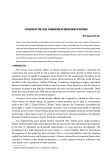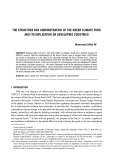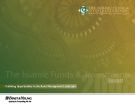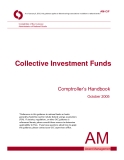
Green climate fund
-
Climate change and pollution are big problems all over the world, not just in one country. Because of this, countries are starting to focus more on protecting the environment and finding ways to grow their economies in a “green” and sustainable way. As one of these countries, Vietnam is using special bonds called green bonds to help fund projects that protect the environment. This is a critical effective tool for mobilizing capital to attract investment capital from domestic and foreign investors for sustainable environmental protection projects in Vietnam.
 6p
6p  leminhvu111
leminhvu111
 07-06-2024
07-06-2024
 3
3
 0
0
 Download
Download
-
The paper "The structure and administration of the green climate fund and its implication on developing countries" focuses on the major challenges faced by the developing countries in other financial mechanism under the UNFCCC. Also it emphasizes on how the challenges are addressed in the GCF basically in its administration and fund disbursement for examining the effectiveness to accomplish the basic principle under the UNFCCC.
 10p
10p  nhanchienthien
nhanchienthien
 25-07-2023
25-07-2023
 8
8
 5
5
 Download
Download
-
Greening the economy involves improving the quality of the environment and tackling climate change, and is a major policy, economic and financial challenge. Key issues that have emerged in this context relate to financing climate change mitigation and adaptation and how to close the financing gap to fund the needed lowcarbon investments.
 11p
11p  huyetthienthan
huyetthienthan
 23-11-2021
23-11-2021
 14
14
 3
3
 Download
Download
-
The World Bank (IBRD) has issued over USD 2.3 billion equivalent of green bonds through 39 transactions in 15 currencies. 50 These are mostly 3-7 year, fixed and floating rate notes (i.e. which pay a variable rate of interest), issued via the AAA rated IBRD, designed to raise capital for projects that aim to combat climate change in developing countries. Projects funded include alternative energy installations, funding for new technologies that reduce greenhouse gas emissions, reforestation, watershed management and flood protection.
 58p
58p  quaivatdo
quaivatdo
 19-11-2012
19-11-2012
 53
53
 4
4
 Download
Download
-
The World Bank‟s green bonds have been well received by investors since they were structured to have simple and standard financial features, such as equivalent credit quality and yield levels to other World Bank triple-A rated bonds so that there is no sacrifice to the end-investor in terms of returns. They were also issues into a liquid market and can be as easily traded as other „plain vanilla‟ bonds issued by the World Bank. Because of these predictable and attractive features and the dedication to climate change, they attracted the interest of a broad range of investors – ...
 41p
41p  quaivatdo
quaivatdo
 19-11-2012
19-11-2012
 45
45
 3
3
 Download
Download
-
The Climate Bonds Initiative argues for green bond issuance at investment grade ratings, consistent with risk/return profiles with existing asset allocation requirements, rather than suggesting a premium (or penalty) rate for the bonds. They propose that governments and IFIs step in to enhance fixed income offerings tied to climate change solutions to ensure investment grade is achieved.
 0p
0p  quaivatdo
quaivatdo
 19-11-2012
19-11-2012
 53
53
 3
3
 Download
Download
-
There are many classes of green bonds that have been issued or proposed, and they have taken on a confusing plethora of names such as green gilts, green retail bonds, green investment bank bonds, green infrastructure bonds, 46 multilateral development bank green bonds, green corporate bonds, green sectoral bonds, rainforest bonds and index-linked carbon bonds. One class of green bonds that has attracted attention recently is the climate bond, which is a type of green bond issued to raise capital for investments in projects which specifically mitigate or adapt to climate change.
 31p
31p  quaivatdo
quaivatdo
 19-11-2012
19-11-2012
 60
60
 4
4
 Download
Download
-
Transparency, predictability and longevity of government programmes are necessary if investors are to initiate a project in green technologies. For instance, the degree of high uncertainty in American Production Tax Credits (PTC) was a contributing factor to investor exit from the wind power sector, in particular - illustrating the importance for governments of ensuring that programmes are not subject to excessive policy uncertainty (see Figure 2). Retroactive policy changes regarding solar power projects in Spain have also been concerning investors.
 33p
33p  quaivatdo
quaivatdo
 19-11-2012
19-11-2012
 82
82
 6
6
 Download
Download
-
If governments wish to encourage investors to finance climate change and green growth projects in future, clear and consistent policies over a long period of time are needed – most notably a clear signal in terms of carbon pricing (e.g. via emissions targets). For example, as Hamilton (2009) points out, renewable energy policy and regulatory framework is the critical element influencing where capital is deployed. Such policy needs to be „loud‟ (i.e.
 66p
66p  quaivatdo
quaivatdo
 19-11-2012
19-11-2012
 56
56
 4
4
 Download
Download
-
For the purpose of this review, green bonds are broadly defined as fixed-income debt securities issued (by governments, multi-national banks or corporations) in order to raise the necessary capital for a project which contributes to a low carbon, climate resilient economy. To date, these have been issued predominantly as AAA-rated securities by the World Bank and other development banks and some other entities in order to raise capital specifically for climate change and green growth related projects.
 39p
39p  quaivatdo
quaivatdo
 19-11-2012
19-11-2012
 62
62
 4
4
 Download
Download
-
What can governments do to support and drive these initiatives further? The most important thing is to provide clear and consistent environmental policies which will fix market failures and give institutional investors the confidence to invest in green projects. Without these policies climate finance from the private sector will not be forthcoming. Governments need to ensure that adequate, investment-grade deals at scale come to the market in order to be able to tap the potential pension funds cash.
 46p
46p  quaivatdo
quaivatdo
 19-11-2012
19-11-2012
 64
64
 6
6
 Download
Download
-
Transitioning to a low carbon and climate resilient economy, and more broadly „greening growth‟ will require shifting significant amounts of capital from fossil fuels and resource-intensive and polluting technologies to newer, clean technology and infrastructure. The appropriate investment landscape will also need to be supported by policy to drive additional capital towards „greening‟ or accelerated phase-out of long-lived black assets such as coal-fired power plants, refineries, buildings and energy infrastructure.
 80p
80p  quaivatdo
quaivatdo
 19-11-2012
19-11-2012
 49
49
 5
5
 Download
Download
-
A further barrier to pension funds‟ investment in green projects is their lack of knowledge and experience not only with „green‟ projects, but with infrastructure investments in general (which green projects are often a subsector of) and the financing vehicles involved (such as private equity funds or structured products).
 61p
61p  quaivatdo
quaivatdo
 19-11-2012
19-11-2012
 62
62
 6
6
 Download
Download
-
It is estimated that transitioning to a low-carbon and climate resilient economy and more broadly „greening growth‟ over the next 20 years will require significant investment and consequently private sources of capital on a much larger scale than previously - particularly given the current state of government finances. There is already international agreement on the need to increase financing for climate mitigation and adaptation – with international financing commitments already having been made.
 34p
34p  quaivatdo
quaivatdo
 19-11-2012
19-11-2012
 51
51
 7
7
 Download
Download
-
We are aiming to create new partnerships with the private sector to increase green investments. The aim is to demonstrate to major private sector investors that climate friendly investments are financially viable. In particular we are working on two partnerships with the private sector for climate-friendly funds. We and other public sector players will consider investing in these funds alongside private pension and sovereign wealth funds.
 10p
10p  quaivatdo
quaivatdo
 18-11-2012
18-11-2012
 61
61
 4
4
 Download
Download
-
Securities regulators oversee Canada’s capital markets and the advisers who sell and manage securities traded in those markets. We strive to protect investors from unfair, improper and fraudulent practices while fostering a fair and efficient marketplace. You can contact your local securities regulator listed on page 20 to check the registration of an individual or firm, and to find out if they have been involved in any disciplinary actions.
 24p
24p  quaivatdo
quaivatdo
 18-11-2012
18-11-2012
 46
46
 4
4
 Download
Download
CHỦ ĐỀ BẠN MUỐN TÌM





























